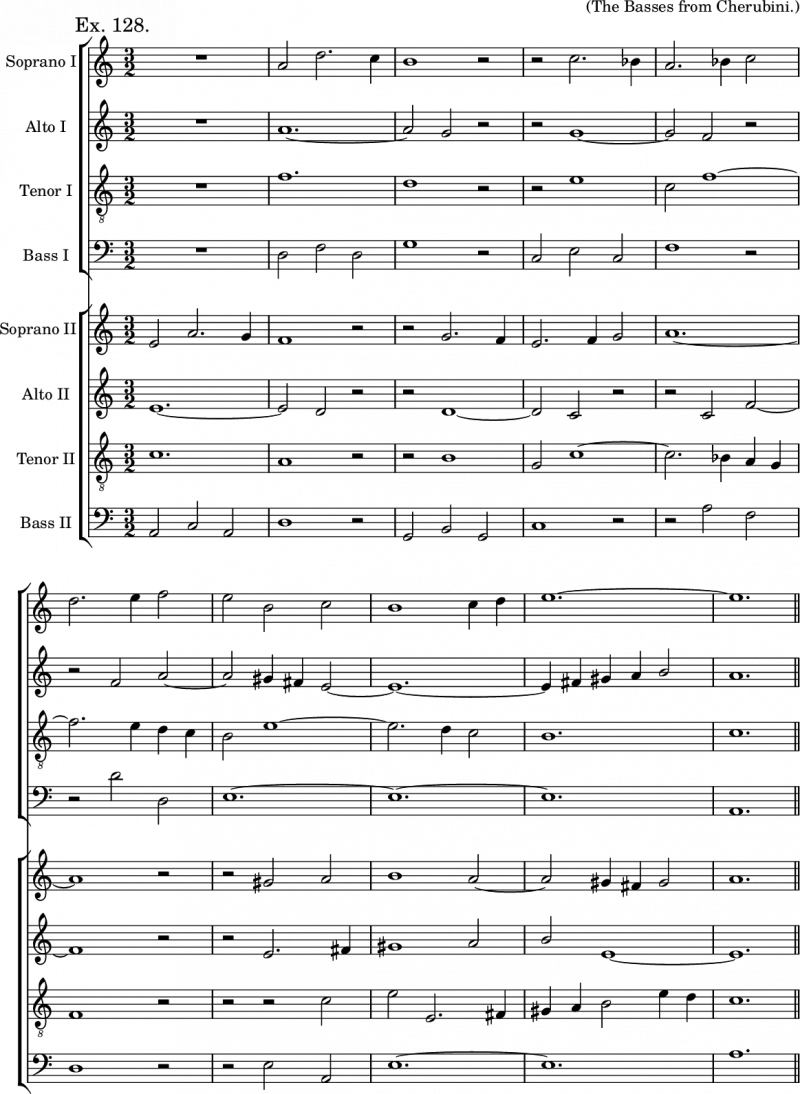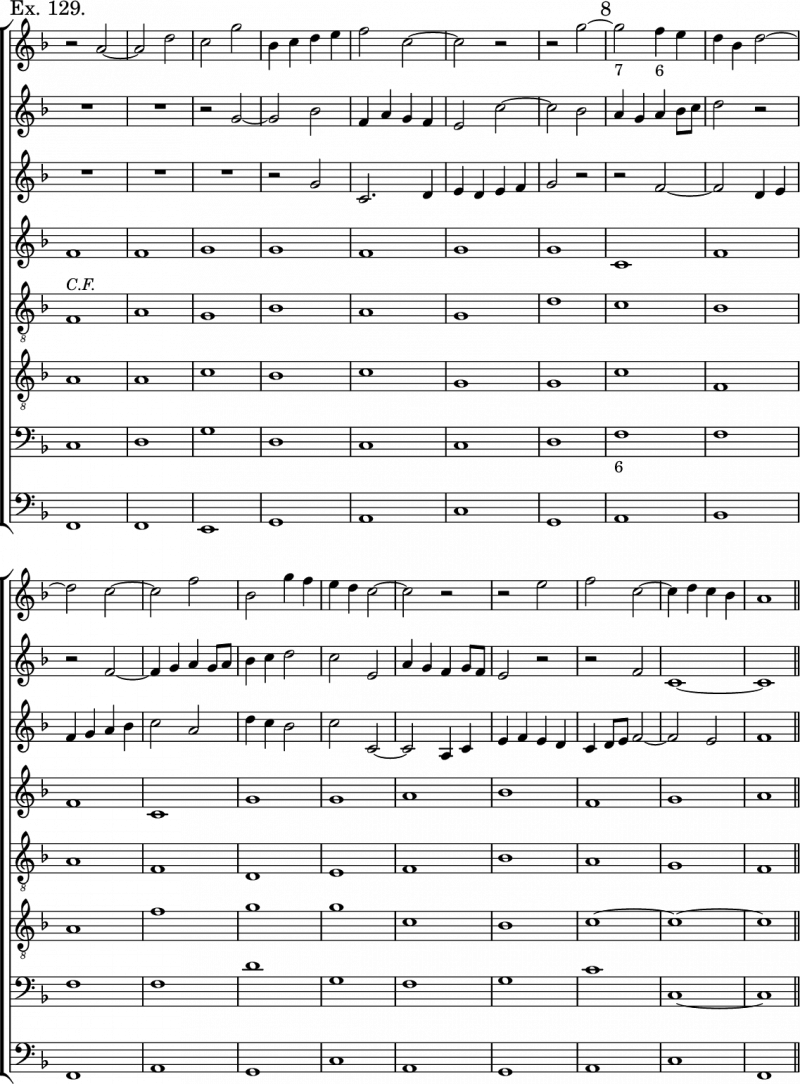Counterpoint (Bridge): Chapter 15
Eight-Part Counterpoint For Two Choirs, Etc.
General Rules
In writing eight-part counterpoint, we sometimes arrange for a double choir of four parts each. In this case, the harmony for each choir should be (as far as possible) complete, and the two groups should move independently and antiphonally, but, of course, occasionally combining. When the choirs are thus divided, and four parts only are moving, the laws of four-part counterpoint must be observed (see Ex. 128).
Eight-Part Counterpoint For Two Choirs, Without Cantus Firmus.
In counterpoint for a double choir, the progression given in Ex. 123 (see Chapter 14) is very useful, as can be seen in the Basses of the above example.
We may, of course, combine the different species in eight-part counterpoint. Example 129 has three parts in florid counterpoint and five in strict note against note. It is, however, almost impossible to produce anything satisfactory in so many parts, when the species are combined, particularly if two or more of them be in crotchets 1) or minims 2); and the author does not recommend students to waste their time on these inartistic musical puzzles. Florid counterpoint in seven or eight parts is, on the contrary, excellent practice, and perseverance will render it no less interesting than profitable.
In bar 8 of Ex. 129, a suspended seventh is heard together with the sixth, the latter not being “of the character of a passing note” (as was mentioned regarding Ex. 118 in Chapter 14) 3); the two notes, however, are separated by so large an interval, and accompanied by so many parts, that they may readily be allowed.
| Navigation | ||
|---|---|---|
| « Chapter 14 | Contents | Appendix 1 » |

